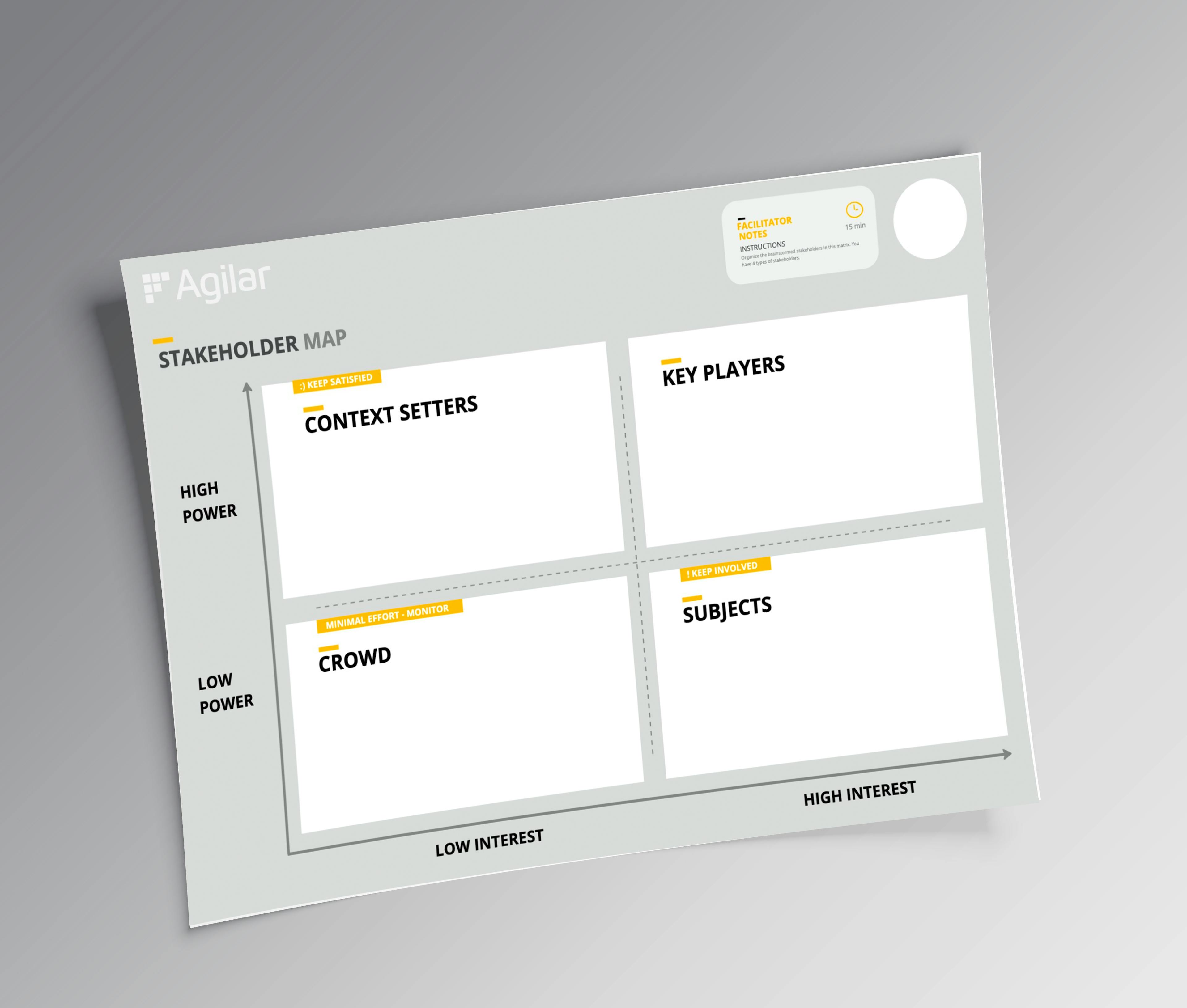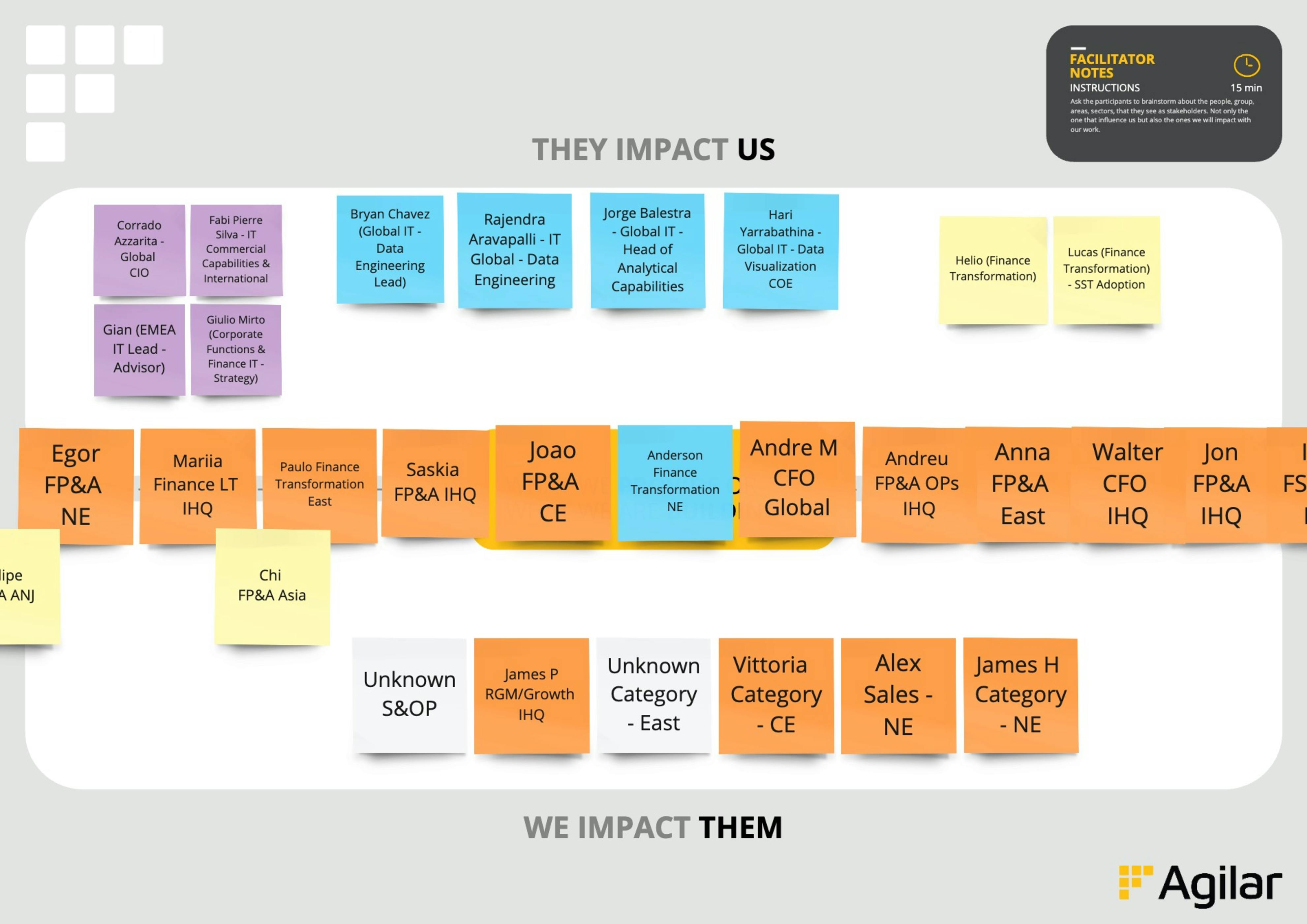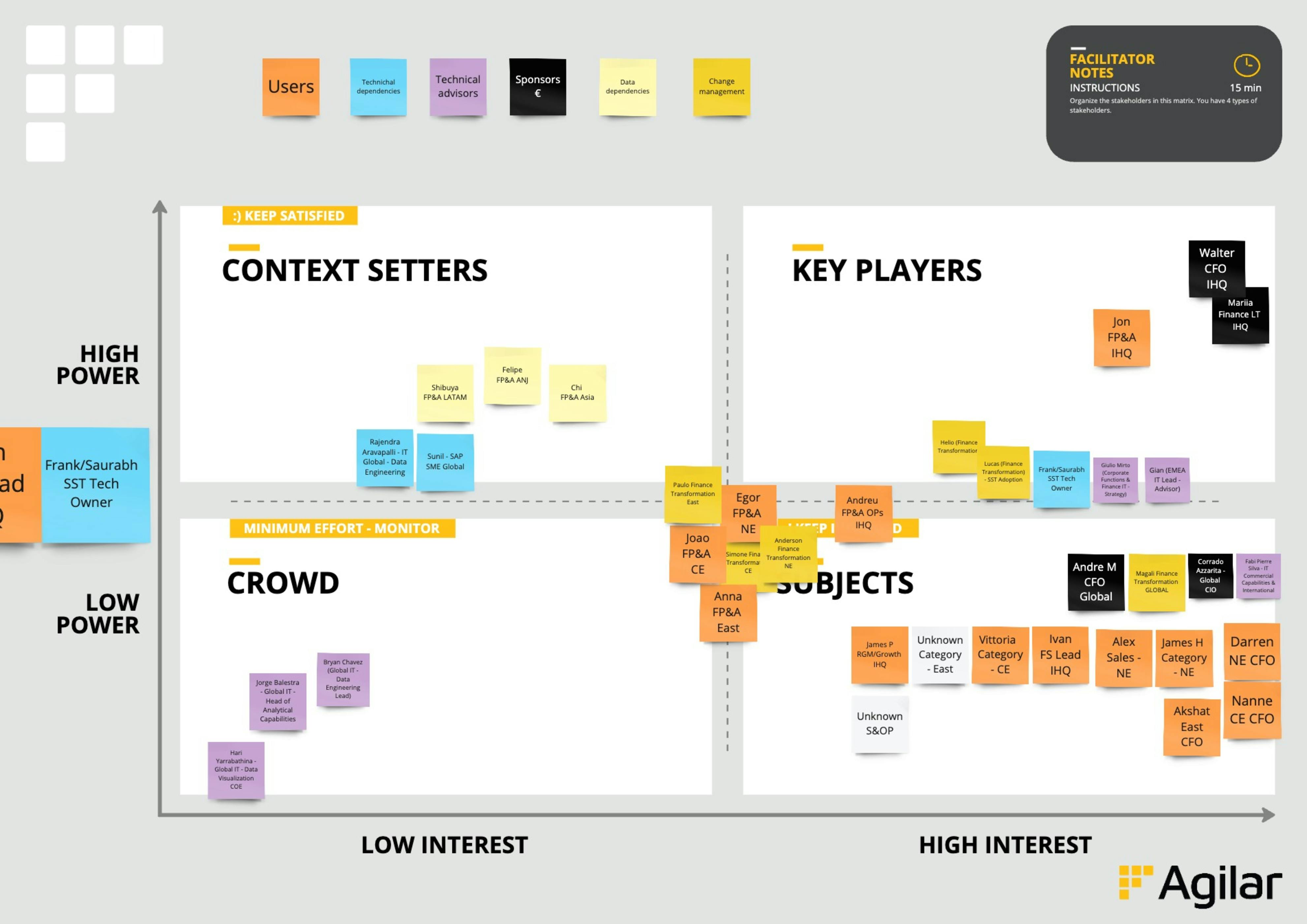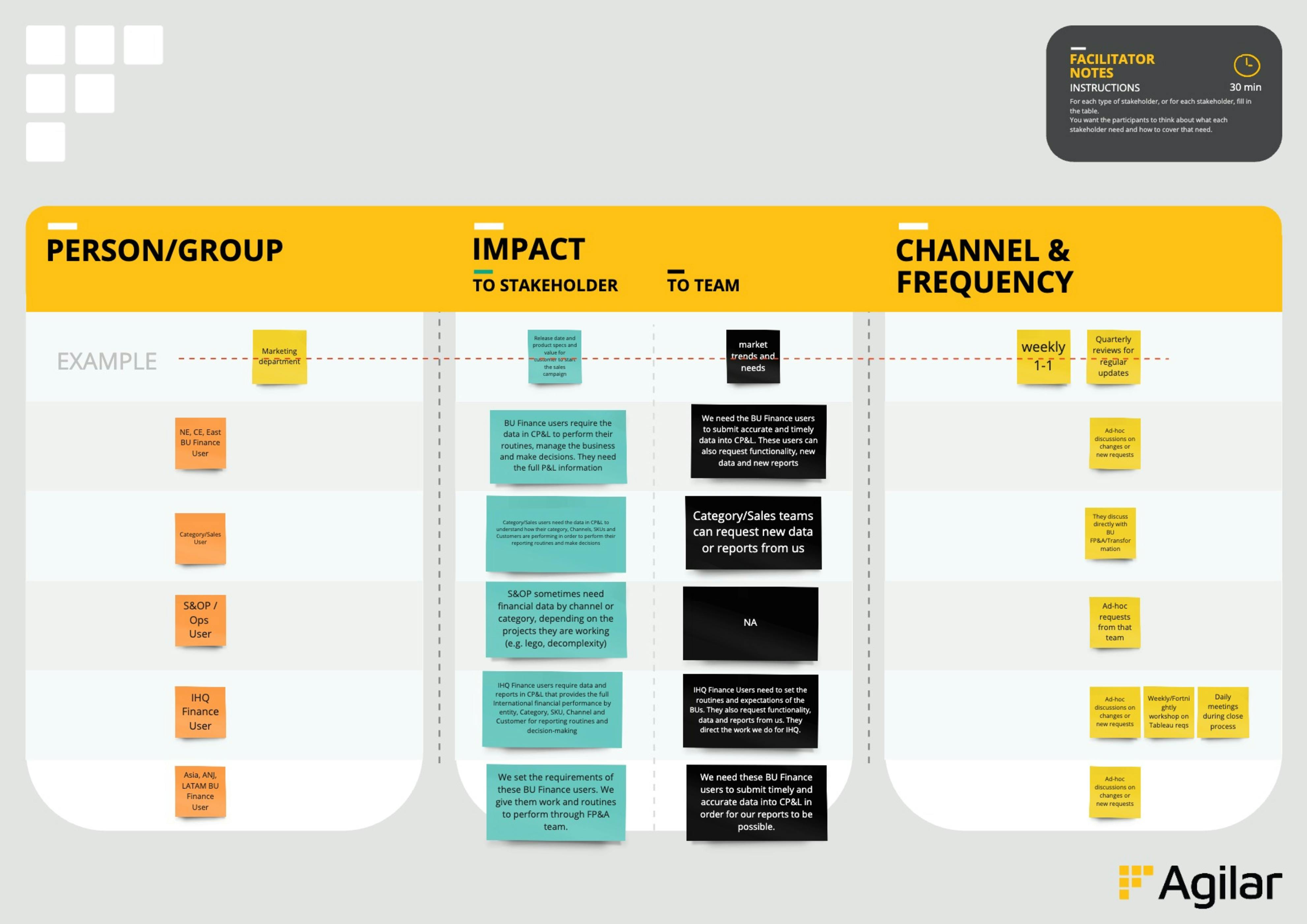
Have you ever thought you had the green light for an initiative, only to have it blocked by an unforeseen decision-maker? The stakeholder map is a highly effective method to ensure consensus and support from all crucial participants.
According to the Scrum Guide, a stakeholder is anyone who is impacted by the outcome of the product and is interested in its success. This term also includes people you communicate and collaborate with, and eventually leaders who have a stake in product success.
What is a Stakeholder Map?
A stakeholder map is a visual, four-quadrant matrix used to identify stakeholders, understand their needs, and classify them based on their levels of influence and interest in your product, project, or initiative.
- Low interest x high interest (the y-axis) – determines the level of interest or how much the stakeholders are impacted by the outcome of the product.
- High power x low power (the x-axis) – measures the stakeholder’s level of influence or impact on the product.
3 common mistakes to avoid
Thinking about mapping your stakeholder can be a tricky business. Here are three common mistakes people often face when trying to identify their stakeholders:
- Excluding the stakeholders when creating the map: The stakeholder map is often created with the product owner & scrum master, sometimes with the team, but rarely checked with the stakeholders. You need to have an afterwards conversation with them to reasure or even create from scracht your working agreements.
- Narrowing the Agile 'stakeholder' concept: We are not talking only about managers but also customers and users. People that are impacted by the team or by whom they are impacted.
- Not updating the map: Stakeholder maps are created and too often forgotten. Agile is an emergent approach so, therefore the goals and needs of the team and the stakeholders are often changing. For example going from context setters to key players.
There are some tricks that have proven to be effective in helping when identifying stakeholders.
- Set a time limit. Foresee at least 30 minutes, ideally 60 minutes, to do the full exercise. The main challenge is determining when to wrap up the mapping process.
- Map with the stakeholders. If you have already identified the main stakeholders before starting, try to get them to join. Stakeholder mapping is most effective when your stakeholders are present, but if this is too tricky then try mapping with the scrum team.
- Record your conversation. The most interesting information is often hidden in the questions that you are asking each other and the overall chat you are having while mapping.
Stakeholder map example
Below is a template with the two most important components for stakeholder mapping:
- An area for brainstorming who your stakeholders are.

- An interest vs. power matrix that allows you to organize all your stakeholders across four quadrants: context setters, key players, crowd, and subjects.

- A table to determine how to cover the needs of every stakeholder.

The stakeholder mapping is an essential tool for any Scrum master, Agile coach, consultant, or project leader aiming to cultivate impactful innovation and ensure successful execution of their product.
Elevate your team's agility, subscribe and access our next course: Certified Scrum Master.